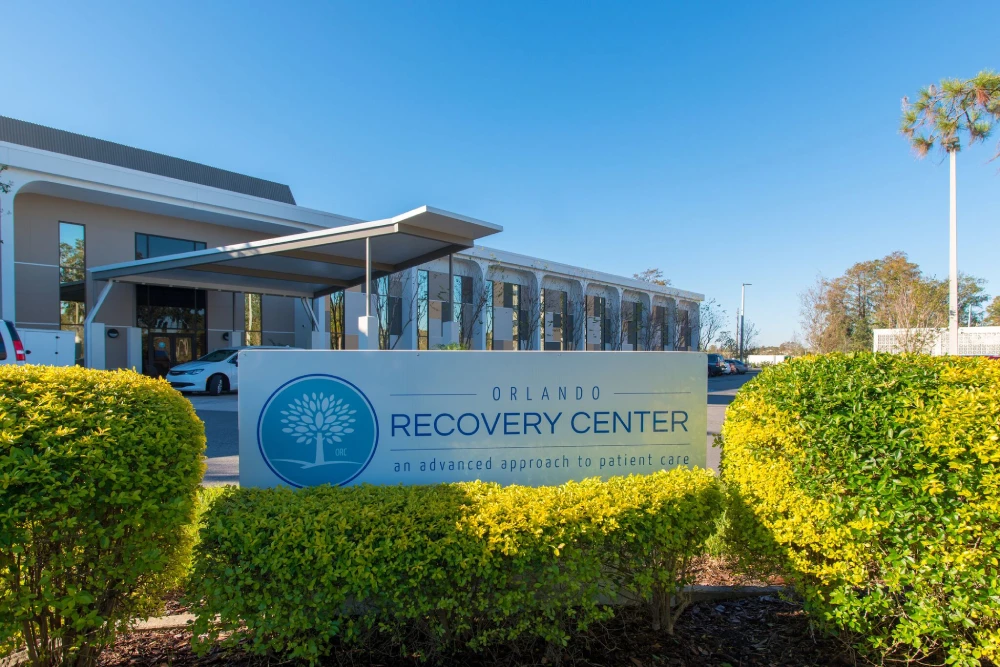Flashy ads and marketing rhetoric have had success promoting e-cigarettes and vape pens as “safe” alternatives to cigarettes. This could not be further from the truth.
Teen vaping is reaching epidemic proportions, withnearly 40%of 12th graders reporting having used a vaping device in the past year, andover 20%of 12th graders reported vaping in the past month. This increase sets a dangerous precedent, and efforts must be made to limit access and significantly reduce the number of teenagers who vape.
What Is Vaping?
Vapingentails inhaling aerosolized particles (vapor) produced when a battery-driven heating element heats a glycerin-based liquid that often contains nicotine, flavoring or even illicit drugs. Vaping is different than smoking, as smoking requires a combustion reaction, while vaping does not. Many people erroneously believe that the chemical process underlying vaping is safer than smoking. Although this is partially true in some instances, there is no question that vaping isbad for your health.
Electronic cigarettes, vape pens and customizable personal vaporizers (“MODS”) are growing in popularity across demographics. Youth vaping is particularly dangerous. Even if teens are not inhaling nicotine orillicit drugs, flavored vape liquids can cause debilitating lung diseases, and the act of vaping can establish a behavioral dependency that substantially increases the likelihood of future vaping or smoking.
What Are Teens Vaping?
An underappreciated aspect of teen vaping is that vape pens can be used to ingestmarijuanaor other illicit drugs. Because the inhaled vapor can be odorless or pleasantly scented, parents who believe their teens are inhaling pure vapor may be unaware that their teenagers are using drugs. Unlike teens smoking cigarettes, vaping can be difficult to detect, and identifying what compounds are being vaped may be even more challenging. As with marijuana and teens, the best strategy to prevent future addiction is a zero-tolerance policy.
Teen Vaping Facts and Statistics
Teenage vaping statistics show an alarming trend in e-cigarette and vape pen use.Vaping is up acrossall adolescent age groups measured: Nearly 10% of 8th graders report vaping in the past 30 days (with 6% reporting that they vaped nicotine), and 25% of 12th graders reported vaping within the past 30 days (21% vaped nicotine). A recentreportpublished by the U.S. Surgeon General indicated that e-cigarette use amonghigh school studentsincreased by a whopping 900% between 2011 and 2015.
What Makes Teen Vaping So Popular?
Many teenagers (and adults) erroneously believe that vaping nicotine is safer than smoking cigarettes, and e-cigarette and vape pen manufacturers have pushed this misperception to profit enormously. Teams of designers market eye-catching devices that appeal to teenagers. The fact remains that vaping, even without nicotine or illicit drugs, has no positive health benefits and poses substantial risks.
The answer to the question “why do people vape?” is simple: Unregulated e-cigarette marketing and theease of accessto e-cigarettes and vape pens, in conjunction with substantial misinformation that is often promulgated by e-cigarette brands, have created an environment where teens incorrectly believe that vaping is cool and poses no health risks.
Is Vaping Better than Smoking Cigarettes?
In most cases, vaping is not better than smoking cigarettes. Data suggests that vaping, even if nicotine or illicit drugs are not present in the vapor, predisposes teenagers to future addictive behaviors. A recentstudy of college studentsfound that e-cigarette use is also significantly associated with illicit drug use andmental healthproblems. Moreover, contrary to what e-cigarette manufacturers would have the public believe, e-cigarettes are not associated with a decrease in nicotine use. In fact,most smokerswho used e-cigarettes in an attempt to quit smoking report that they end up smoking cigarettes and vaping nicotine. Thus, smoking to vaping side effects are likely to include increased — not decreased — nicotine use.
Dangers of Teen Vaping
The risks of vaping have been clearly identified in recent years. Vaping is associated with futurenicotineand illicit drug use. The extremely popular JUUL e-cigarette holds about72%of the vape pen market and offers a wide variety of enticing flavors. Each JUUL cartridge containsas muchnicotine as one pack of 20 cigarettes. However, there isno standardnicotine concentration between e-cigarette brands or refillable liquids, so that brands may have more or less nicotine than a pack of cigarettes. Nicotine use is particularly dangerous for adolescents, as it has been shown toaffect brain development.
Research on inhaled chemicals associated with vaping (with or without nicotine) are ongoing, but mounting evidence suggests that inhaling vaping products may be dangerous. For example, although vape pen flavorings may be safe to eat, the vaporized particles may be harmful when inhaled. Some vape pens have also been shown to containheavy metals and chemicalsthat are associated with cancer.
Side effects of vaping depend somewhat on the product being vaped. It is important to note that vaping is never safe and offers no positive health benefits.
- Nicotine Addiction: Vaping nicotine has beenconclusivelyshown to cause addiction, and even vaping flavored compounds without nicotine or illicit drugs have been linked to behavioral dependency.
- Marijuana Addiction: E-cigarettes and vape pens have been significantly linked to marijuana use amongadolescents and young adults. Moreover, teens addicted to marijuana are more likely to use alcohol and other illicit drugs.
- Addiction to Illicit Drugs: Vape pens provide a sneaky way for teenagers to usedangerous drugs, including synthetic cannabinoids,cocaine, GHB,MDMA, andheroin.
Teen Vaping and Nicotine Addiction Health Risks
The health risks of vaping are becoming increasingly clear and are similar to the health risks of smoking. Nicotine use, particularly among teenagers, has incredibly negative short and long term health implications. Nicotine isprofoundly addictive, and even tobacco-free nicotine hasnegative effectson the cardiovascular system. Daily use of e-cigarettesdoublesthe risk of heart attack, and when e-cigarettes and conventional cigarettes are used concurrently, the risk is five-fold. For teenagers, nicotine poses particular risks because itaffects brain development, with negative effects on the areas of the brain that regulate attention, learning, andimpulse control. Teens who use nicotine are at substantially elevated risk for developing lifelong nicotine addiction. Despite the common misconception that e-cigarettes are safer than smoking, a growing body of evidence indicates that long term effects of vaping are incredibly detrimental to physical and mental health.
- Impact on Brain Receptors: A great deal is known about nicotine and the brain. Nicotine affects brain receptors for the neurotransmitteracetylcholine(ACh). The result of nicotine use is that the brain thinks it has too much ACh and reduces its production of ACh. ACh is crucial for processes ranging from muscle movement to memory formation. Nicotine also has potent effects on the dopamine system, which regulates the “reward pathway,” causing chemical changes in the brain that reinforce the “need” for more nicotine.
- Increased Likelihood of Smoking Cigarettes in Future: Apreponderance of evidenceindicates that teenagers who vape nicotine are significantly more likely to smoke cigarettes in the future.
- Diseases Caused By Vaping: A recentHarvard studyfound that more than 90% of flavored vape liquids had harmful levels of the flavoring chemical diacetyl and 2,3-pentanedione. Inhalation of these chemicals is associated with the development of bronchiolitis obliterans (“popcorn lung”), a debilitating disease that damages lung tissue and causes chronic cough and shortness of breath and chronic pulmonary obstruction disorder (COPD).
- Vapingand Cancer: Many vape pen and e-cigarette manufacturers tout their products as being safer than conventional cigarettes because there is no tobacco combustion, which is significantly linked to lung cancer development. In spite of their claims, vaping (with or without nicotine) may result in inhalation ofpotential carcinogens, including volatile organic compounds (VOCs), flavoring chemicals and formaldehyde. Secondhand vapors are also currently being evaluated; preliminary data suggests that exhaled vaporssignificantly worsenindoor air quality.
Is Vaping Addictive Without Nicotine?
Although the powerfully addictive properties of nicotine make e-cigarettes riskier than flavor-only vape pens, overwhelming evidence indicates that vape pens can instill behavioral dependency. Moreover, the side effects of vaping without nicotine include debilitatinglung diseases(popcorn lung, COPD and asthma) from aerosolized flavoring, inhalation of cancer-causingvolatile organic compounds, deposition ofheavy metalsin the mouth and lungs and inflammation thatpromoteslung fibrosis.
Vaping As A Behavioral Addiction
Behavioral addictionis veryreal. For example, you probably know someone who compulsively bites their fingernails, andgambling addictionhas ruined many lives. Nicotine-free vaping can instill powerful behavioral dependency issues. Many people who use flavor-only vape pens during routine “smoke breaks” find that they begin to anticipate the scheduled vape session. If they are unable to participate, they may report a preoccupation with vaping, loss of concentration and depressed mood.
Signs of Teen Vaping Addiction
Many teens vape openly, citing vague evidence that e-cigarettes and vape pens reduce cigarette use. This argument does not apply to individuals who have never had nicotine addictions, and most data does not support that e-cigarettes reduce smoking in nicotine-addicted adults. The bottom line is that vaping is never safe, and teenagers are at a particularly high risk for long-term nicotine addiction and associated diseases and disorders.
Many teenagers hide their vaping from their parents.Signsyour kid is vaping include:
- Increasedthirst: Vaping dehydrates the mouth and throat
- “Vaper’sTongue”: Vaping is associated with a loss of flavor perception, so vapers often add extra salt or spices to food
- Reduced Caffeine Intake: Nicotine is astimulantthat, when combined with caffeine, can causeanxiety
- ChronicCough: Vaping (with or without nicotine) is irritating to lung tissue, which is why a serious complication of vape-induced cough is pneumonia
- Unfamiliar USB Drives or Electronic Devices: Vape pens and e-cigarettes have capitalized on the popularity of electronic devices
- Sweet Smells: Flavored vape liquid comes with names like “cotton candy,” “creme brulee” and “tutti frutti”
- Secrecy/Paranoia: Teens who are hiding vaping from their parents may be especially resentful of perceived intrusions
- Irritability: Vaping nicotine can quickly lead to dependence and addiction.Withdrawal symptomsoften present as irritability and mood swings
Key Points: The Rise of Teen Addiction
Some key points to remember about teen vaping include:
- Teen vaping has increased at an alarming rate in the past decade, with 25% of 12th graders reporting that they have vaped within the past 30 days
- Teenagers are at particular risk for adverse effects of vaping, including nicotine addiction
- Vaping is associated with increased illicit substance use
- Vaping is addictive, whether or not nicotine is present
- Flavored vaping liquids are not safe; chemicals, like diacetyl, can lead to profoundly debilitating conditions like lung disease and asthma
- Adolescent brains are still developing; vaping can cause substantial chemical and structural changes that will negatively affect development
There is no safe way to vape. Even when nicotine or illicit drugs are not present, aerosolized particles can be harmful to lungs and developing brains.
If you are concerned that your teen is addicted to alcohol or other drugs, pleasecall The Recovery Villagetoday. We can help you and your loved ones regain control of your lives.
















